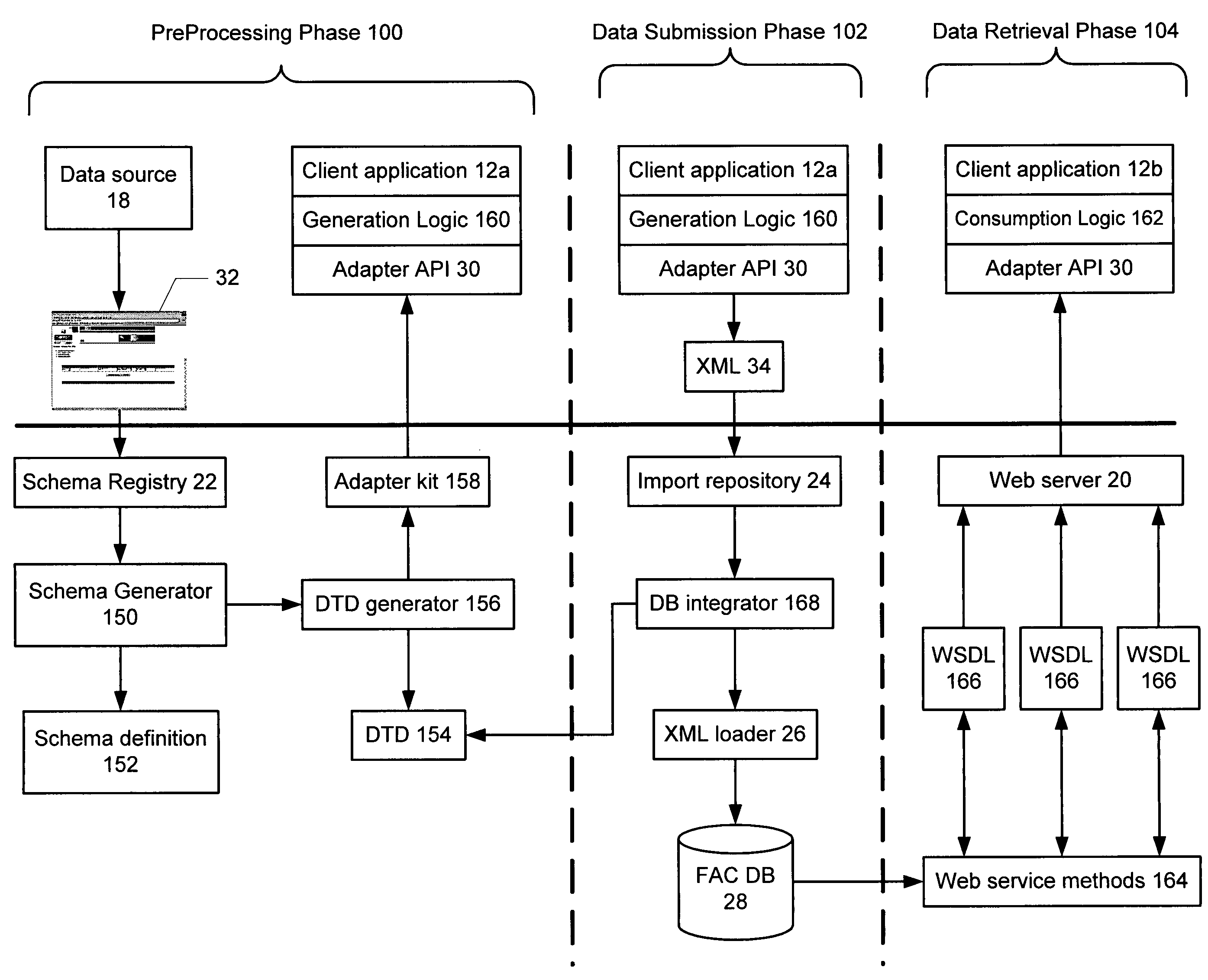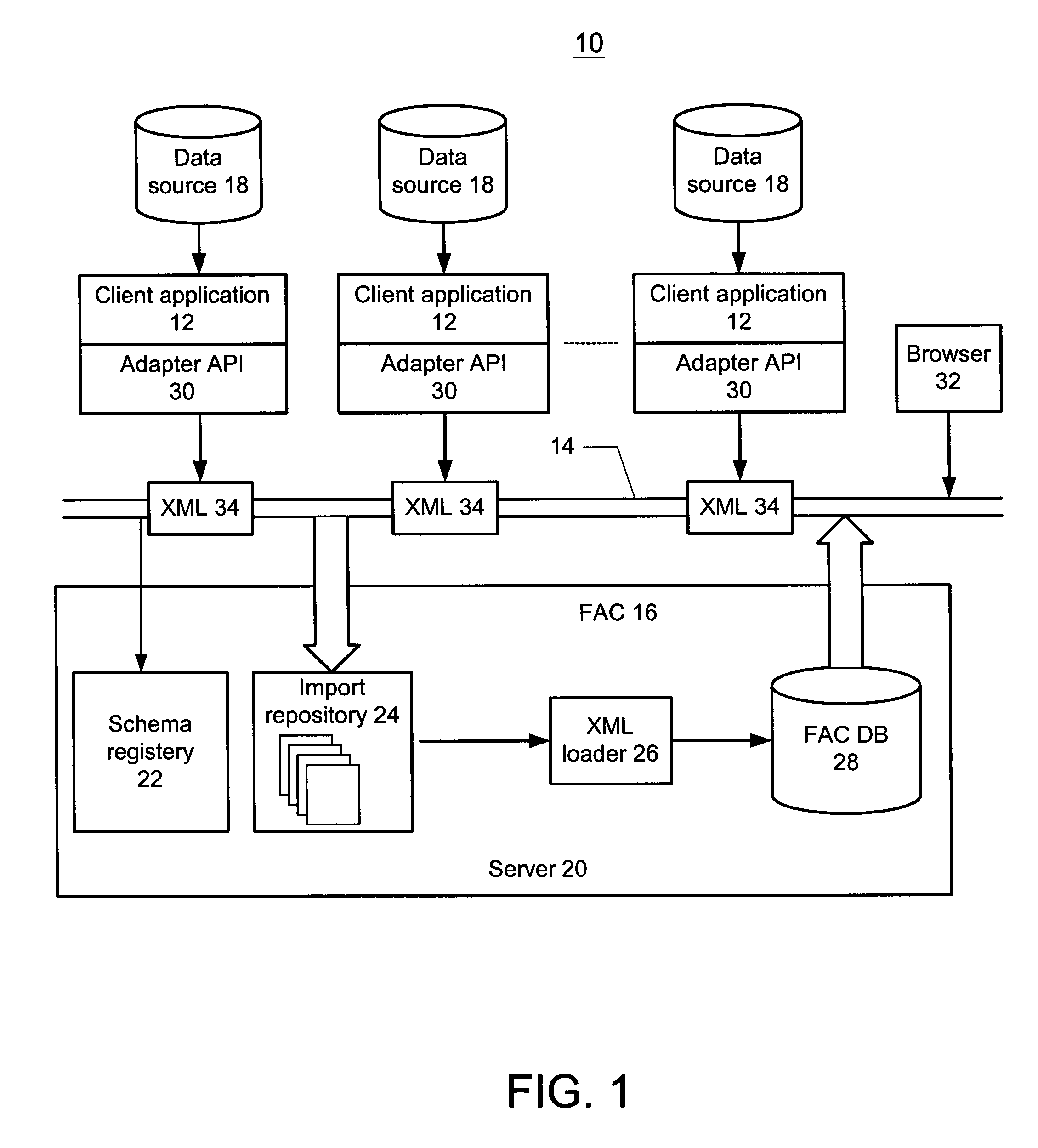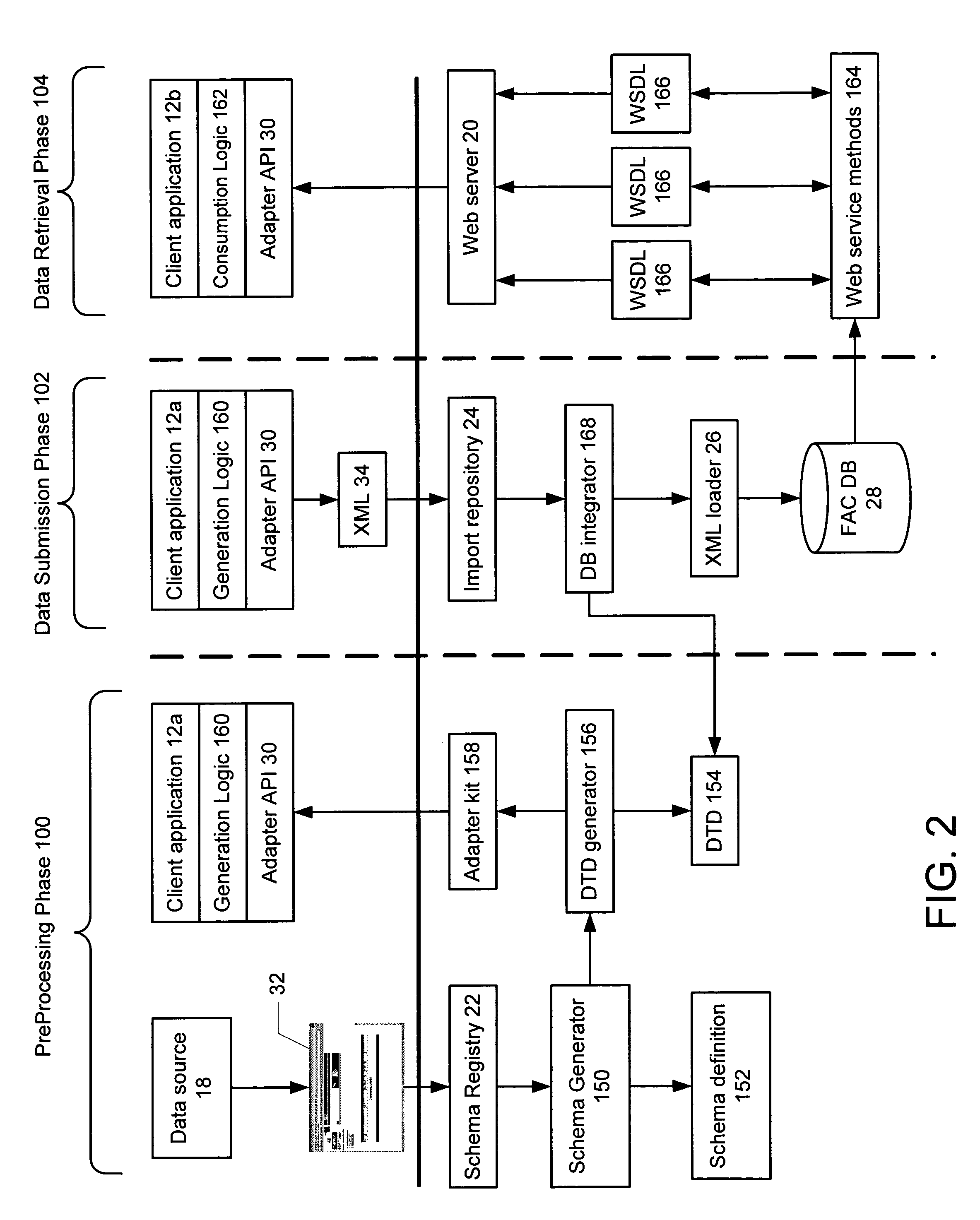Flexible architecture component (FAC) for efficient data integration and information interchange using web services
a web service and flexible architecture technology, applied in the field of enterprise application integration, can solve the problems of many problems with respect to implementing enterprise level integration, not all applications have access to the data produced, and the chip manufacturer is not compatible with each other in terms of how,
- Summary
- Abstract
- Description
- Claims
- Application Information
AI Technical Summary
Benefits of technology
Problems solved by technology
Method used
Image
Examples
Embodiment Construction
[0023] The present invention relates to a method and system for providing enterprise-level data integration. The following description is presented to enable one of ordinary skill in the art to make and use the invention and is provided in the context of a patent application and its requirements. Various modifications to the preferred embodiments and the generic principles and features described herein will be readily apparent to those skilled in the art. Thus, the present invention is not intended to be limited to the embodiments shown, but is to be accorded the widest scope consistent with the principles and features described herein.
[0024] The present invention solves the enterprise level data integration problem by providing a complete, but simplified, low-cost infrastructure solution referred to herein as a Flexible Architecture Component (FAC), that facilitates XML data generation, transport, storage and retrieval of data across applications for the import and export of the d...
PUM
 Login to View More
Login to View More Abstract
Description
Claims
Application Information
 Login to View More
Login to View More - R&D
- Intellectual Property
- Life Sciences
- Materials
- Tech Scout
- Unparalleled Data Quality
- Higher Quality Content
- 60% Fewer Hallucinations
Browse by: Latest US Patents, China's latest patents, Technical Efficacy Thesaurus, Application Domain, Technology Topic, Popular Technical Reports.
© 2025 PatSnap. All rights reserved.Legal|Privacy policy|Modern Slavery Act Transparency Statement|Sitemap|About US| Contact US: help@patsnap.com



